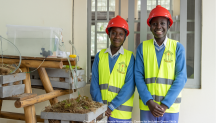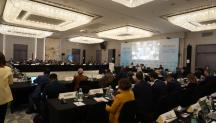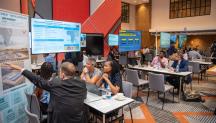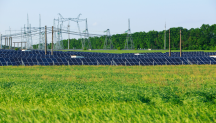
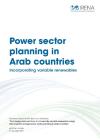
-
-
IRENA (2020), Power sector planning in Arab countries: Incorporating variable renewables, International Renewable Energy Agency, Abu Dhabi.
Copied
/-/media/Files/IRENA/Agency/Publication/2020/Jan/IRENA_Arab_VRE_planning_2020.pdf
Copied
Power sector planning in Arab countries: Incorporating variable renewables
Newsletter
Many Arab countries, despite currently low to negligible renewable energy use, have set ambitious targets to increase their shares of renewables. Yet power-system planning is frequently constrained by cost implications and the lack of first-hand experience with renewables. Solar and wind power, particularly, present challenges for existing power systems due to resource variability.
This report builds on input from a regional planning workshop held by the International Renewable Energy Agency (IRENA), the League of Arab States and the Regional Center for Renewable Energy and Energy Efficiency (RCREEE), with additional support from the Islamic Development Bank (IsDB).
Among the highlights:
- Variable renewable energy (VRE) deployment must be supported by robust long-term energy and power sector planning.
- The Pan-Arab Clean Energy (PACE) initiative co-ordinated by IRENA aims to promote the integration of higher shares of renewables and improve planning practices.
- IRENA’s AVRIL (Addressing Variable Renewable Energy in Long-term Energy Planning) project has investigated the best practices available for power-system planning to maximise VRE integration.
- Government ministries play a crucial role in adapting power sector planning practices to create robust, long-term energy strategies.
- While countries are at various stages of VRE planning and deployment, the opportunities for regional dialogue and collaboration are significant.
- Follow-up analysis and further workshop discussions could focus on cost projections, capacity credits, flexibility, zoning and system stability.
The discussions have produced insights on VRE integration at the regional and country level.
An earlier study introduced various approaches to reflect solar and wind variability in long-term planning tools. See IRENA (2017), Planning for the renewable future.
